From weeping trees to teeth stronger than Kevlar, our scientist Dr Tom White sheds light on a few of the fascinating, unnoticed ways the Moon shapes the course of life on Earth.

The Moon may be a distant object in the sky, but its influence is still felt here on Earth. © geografia24eu/ Shutterstock
“The Moon has been up there as long as evolution has been taking place and lunar rhythms are embedded in the life cycles of many organisms,” Tom says.
“The challenge is working out when the Moon truly is a factor and what is merely myth and legend.”
The Moon affects life on Earth in three main ways
According to Tom, there are three main ways in which the Moon impacts on life – time, tides and light.
“For many animals, particularly birds, the Moon is essential to migration and navigation. Others will time their reproduction to coincide with the specific phases of the lunar cycle.”
There’s also a whole world of fascinating adaptations relating to tides and the unique properties of moonlight.
On the lunar clock
It’s possible you’ve heard of circadian rhythms. They refer to day and night cycles driven by Earth orbiting the Sun. Human circadian rhythms are easily thrown off by jet lag or a change of the clocks.
But there are also circalunar rhythms, which are tied to lunar cycles.
“Circalunar rhythms are very difficult to discern, but they have effects on different types of organisms,” says Tom. “Some animals will respond to both a circadian rhythm and a lunar clock.”
Crustaceans with two compasses
Always on the move, sand hoppers, Talitrus saltator, work very hard to keep themselves in their ideal waterfront real estate. A small misjudgement would see them dried out on the beach, eaten by predators or swept out to sea.
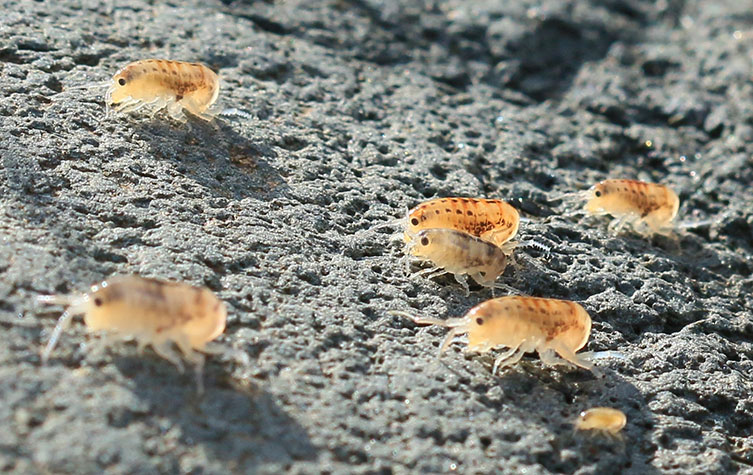
Sand hoppers on a beach in East Lothian, Scotland. Image © S. Rae via Flickr, licensed under CC BY 2.0
To keep them commuting in the right direction, sand hoppers carry two compasses to help them with orientation and navigation on the beach.
“They have a Sun compass in their brain and a Moon compass in their antennae, so they know to stay buried during the day and can forage efficiently during the night at low tide,” Tom explains.
The Great Barrier Reef
The mass spawning of corals on the Great Barrier Reef is also triggered by the Moon. It’s brilliant to witness – during spawning, billions of coral polyps release their egg and sperm into the sea.
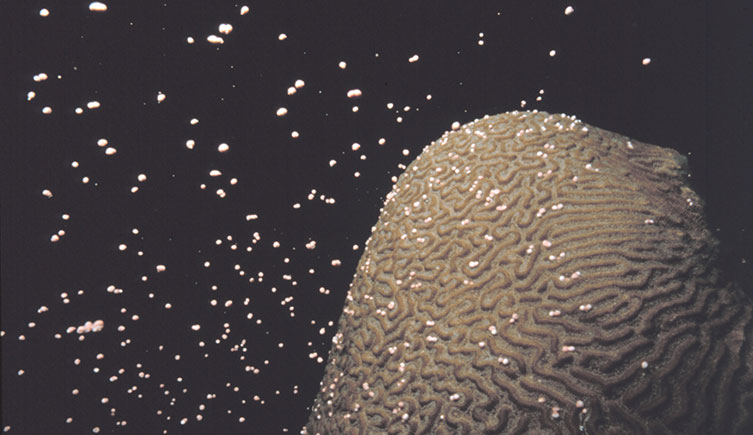
Brain coral spawning. Image © NOAA/Emma Hickerson via Wikimedia Commons, public domain
“The corals time their spawning according to several factors, including temperature, salinity and availability of food,” says Tom. “But it always occurs between October and December and right after a full Moon.”
The visual effect of this coordinated lunar timing is so dramatic that it can be seen from space.
Well-timed reunions
Barau’s petrel, Pterodroma baraui, is an endangered seabird that breeds on the island of Réunion in the Indian Ocean.
The petrels time their pre- and post-breeding migrations by length of the day, waiting until it reaches 12.5 hours before setting off.

Barau’s petrel in flight. © Neil Bowman/ Shutterstock
Their arrival dates at the breeding grounds vary each year, but the birds always arrive together at the full Moon. This suggests they use both the Moon and the length of the day to synchronise their migrations.
Get with the tides
Tides are perhaps the most observable effect of the Moon on Earth and one that most people will recognise.
“We have some of the most extreme tidal ranges right here in the UK,” says Tom. “The animals that live in costal habitats with high tidal ranges have adapted to some of the most variable and extreme places on Earth.”
For instance, the life of a limpet is quite a difficult one.
“One minute you’re above water exposed to shoreline predators, wind and heat – the next minute you’re being buffeted by waves or entirely submerged,” Tom explains.

Limpets and mussels in a rock pool. © Miriam Newitt/ Shutterstock
It’s taken some remarkable adaptations for limpets to survive in their changeable seashore habitats.
Protected from the elements by their hard, cap-like shell, these molluscs eke out a living by scraping food from the rock surface with a tongue-like structure covered in hundreds of tiny teeth.
“Limpet teeth were recently studied and found to be the strongest biological material ever tested, five times stronger than spider silk and stronger even than man-made materials like Kevlar,” he says.
Moved by moonlight
Fluctuating light levels reflected by the Moon also have a startling impact on life on Earth.
Not only has low lighting led to a number of interesting nocturnal adaptations, but some organisms rely directly on moonlight to navigate and procreate.
Trees that weep
Although there’s no scientific evidence to suggest the Moon affects our mood, it can inspire one fascinating Mediterranean plant to weep.
Also known as the joint pine or Mormon tea, Ephedra foeminea is a gymnosperm, a group of ancient, flowerless plants that rely on insects for pollination.
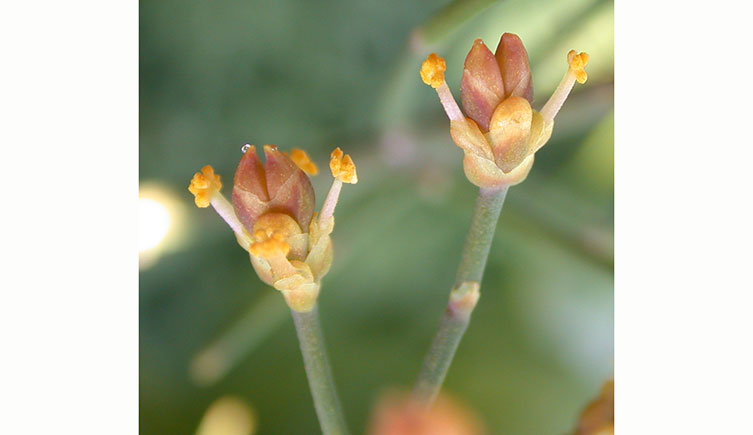
Close-up of cones from a joint pine, Ephedra foeminea. Image © Gideon Pisanty via Wikimedia Commons, licensed under CC BY 3.0
Without flowers or other lures, the joint pine has developed an unusual technique to get the attention of potential pollinators.
In bright moonlight, each little cone produces droplets of fluid to help stick its pollen to passing insects. These droplets sparkle under polarising light – moonlight – creating a glittering disco-like display that draws beetles and other nocturnal insects to the plant.
Directing dung beetles
Under the moonlight in Africa, the dung beetle Scarabaeus zambesianus uses the polarisation pattern of moonlight and the way it scatters through the atmosphere to navigate in a straight line.
“If you’re a dung beetle with a fresh dung pile, the best thing to do is to take your newly rolled dung ball and leave in a straight line, moving as quickly and efficiently as possible to your burrow, because if you hang around you might get eaten by a predator or lose your dung ball to a competitor,” says Tom.
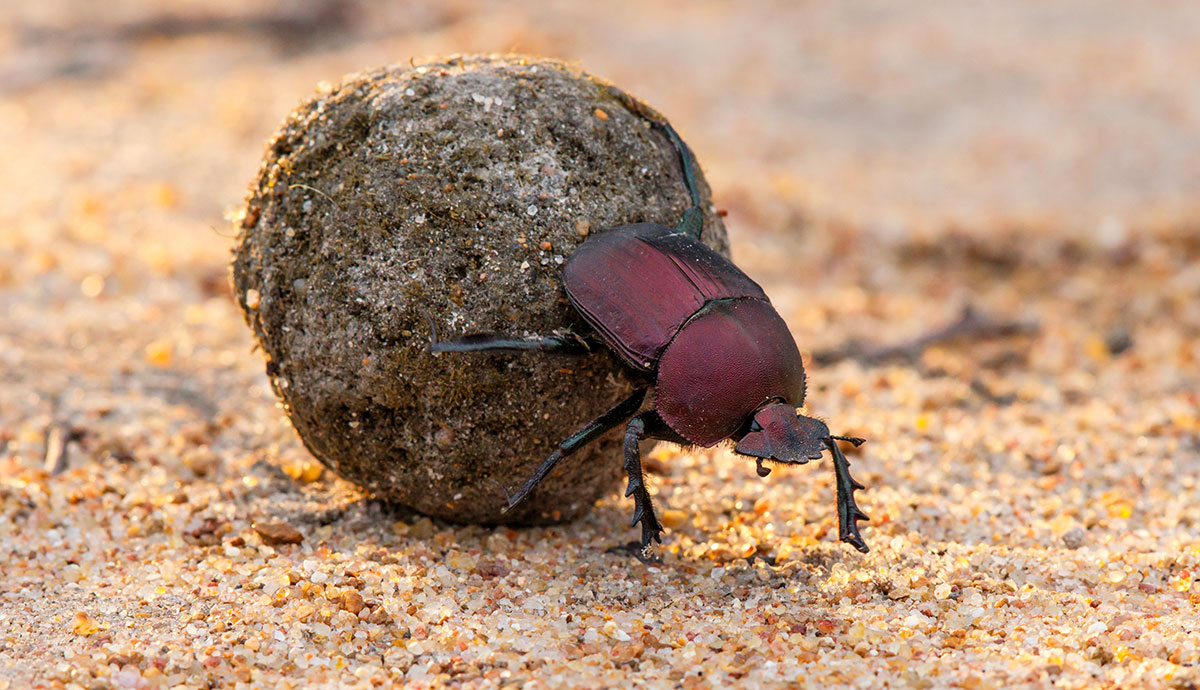
Dung beetle astride a dung ball. © Henk Bogaard/ Shutterstock
“In recent research done in a lab in Sweden, scientists placed dung beetles under non-polarising artificial light and discovered that they travelled in circles,” he adds.
“So basically, they rely on polarisation patterns specific to moonlight in order to navigate and orientate themselves and travel safely home.”
It’s quite a cautionary tale, says Tom.
“With growing light pollution around the world, species with nocturnal behaviours dependent on moonlight are having it obscured by other light sources, and they’re in trouble.”
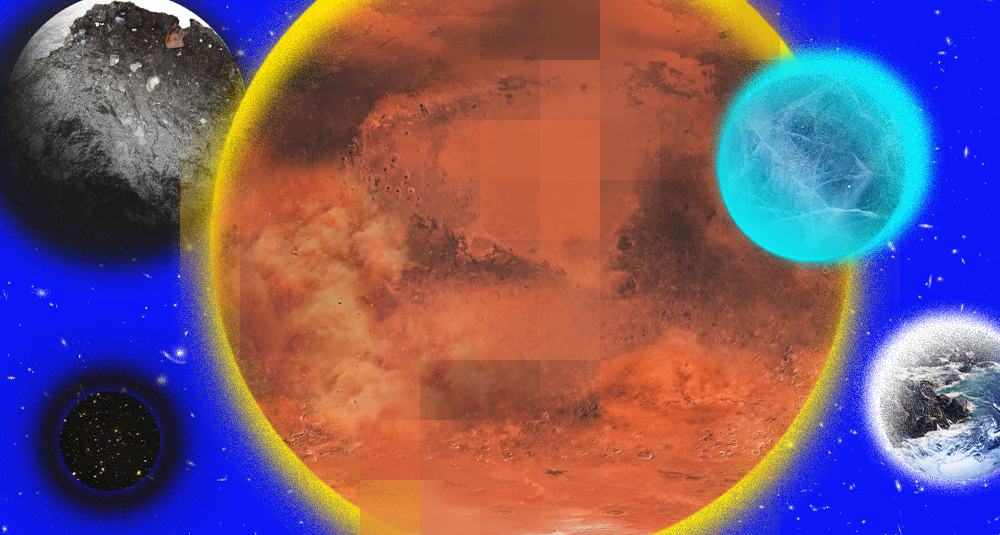
Space: Could Life Exist Beyond Earth?
Find out in our latest exhibition! Snap a selfie with a piece of Mars, touch a fragment of the Moon and lay your hands on a meteorite older than our planet.
Open now

Explore space
Discover more about the natural world beyond Earth's stratosphere.
Prepare for liftoff knowledge seekers!
But hold onto your helmets. Did you know we’re offering an on-demand course about Rocks in Space? Get ready to expand your knowledge to infinity and beyond.



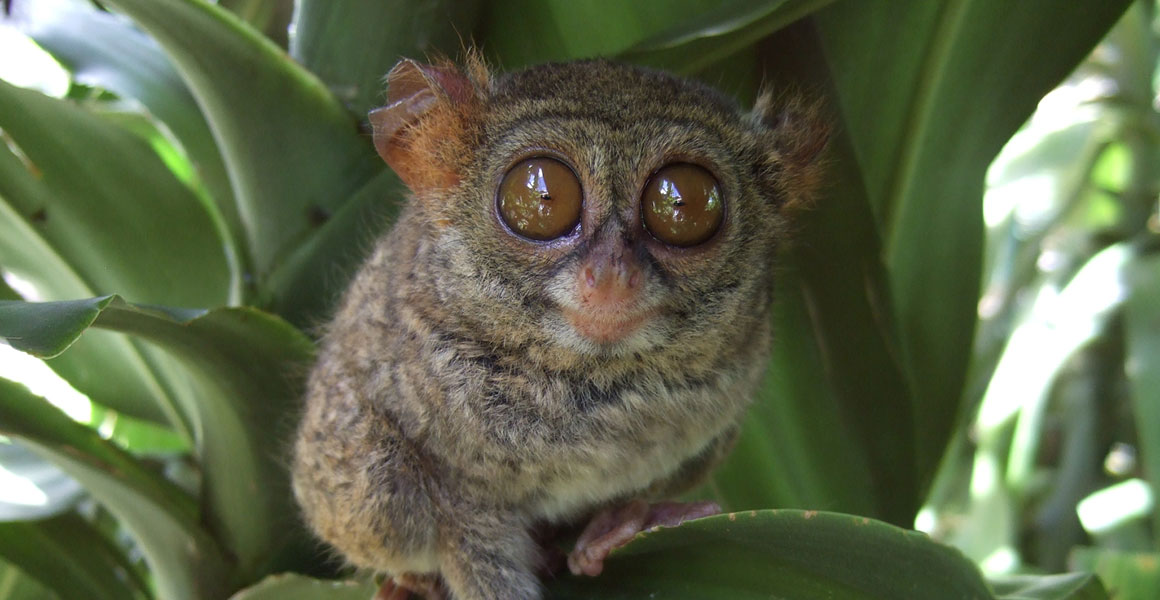
Don't miss a thing
Receive email updates about our news, science, exhibitions, events, products, services and fundraising activities. We may occasionally include third-party content from our corporate partners and other museums. We will not share your personal details with these third parties. You must be over the age of 13. Privacy notice.
Follow us on social media